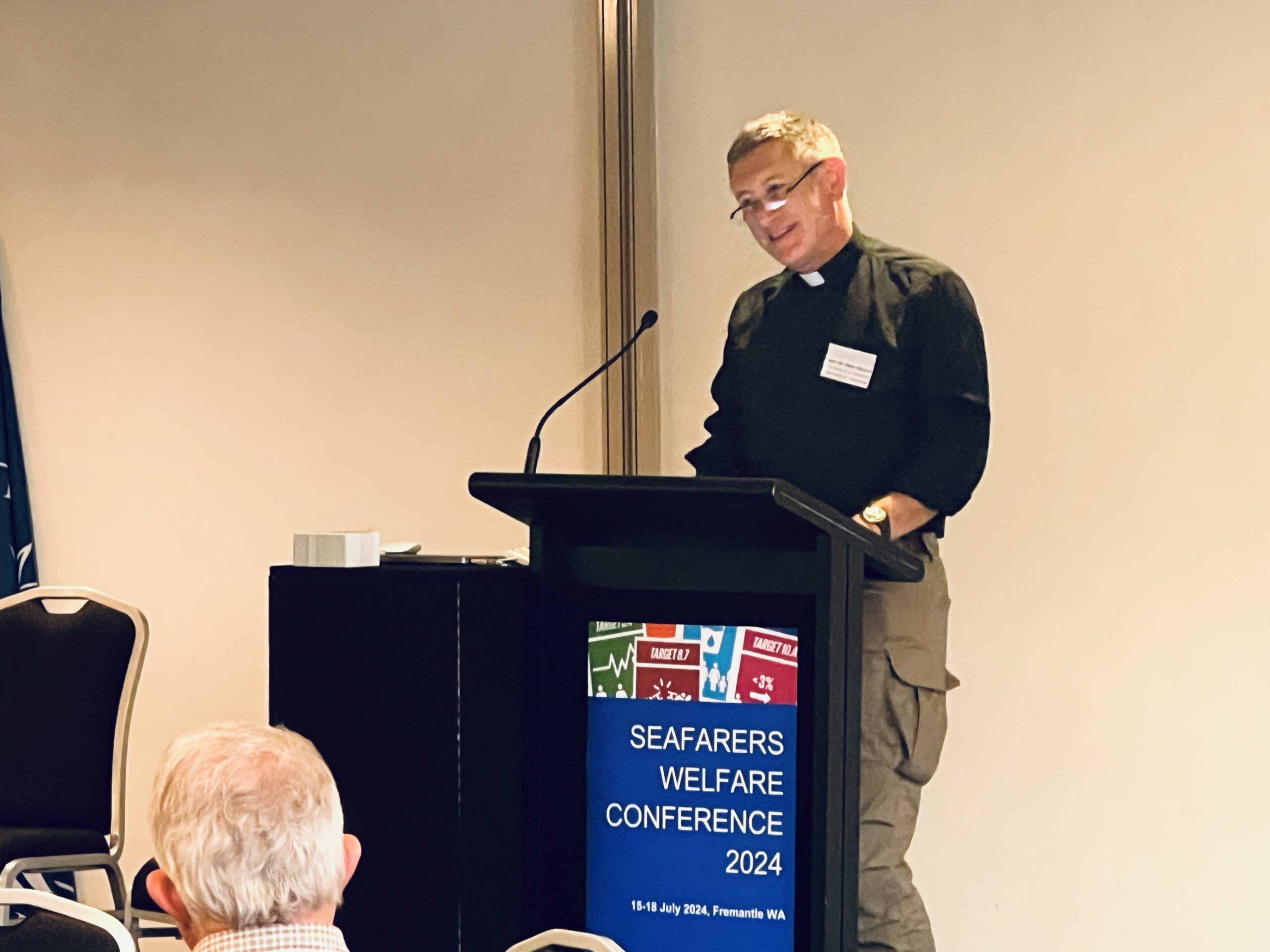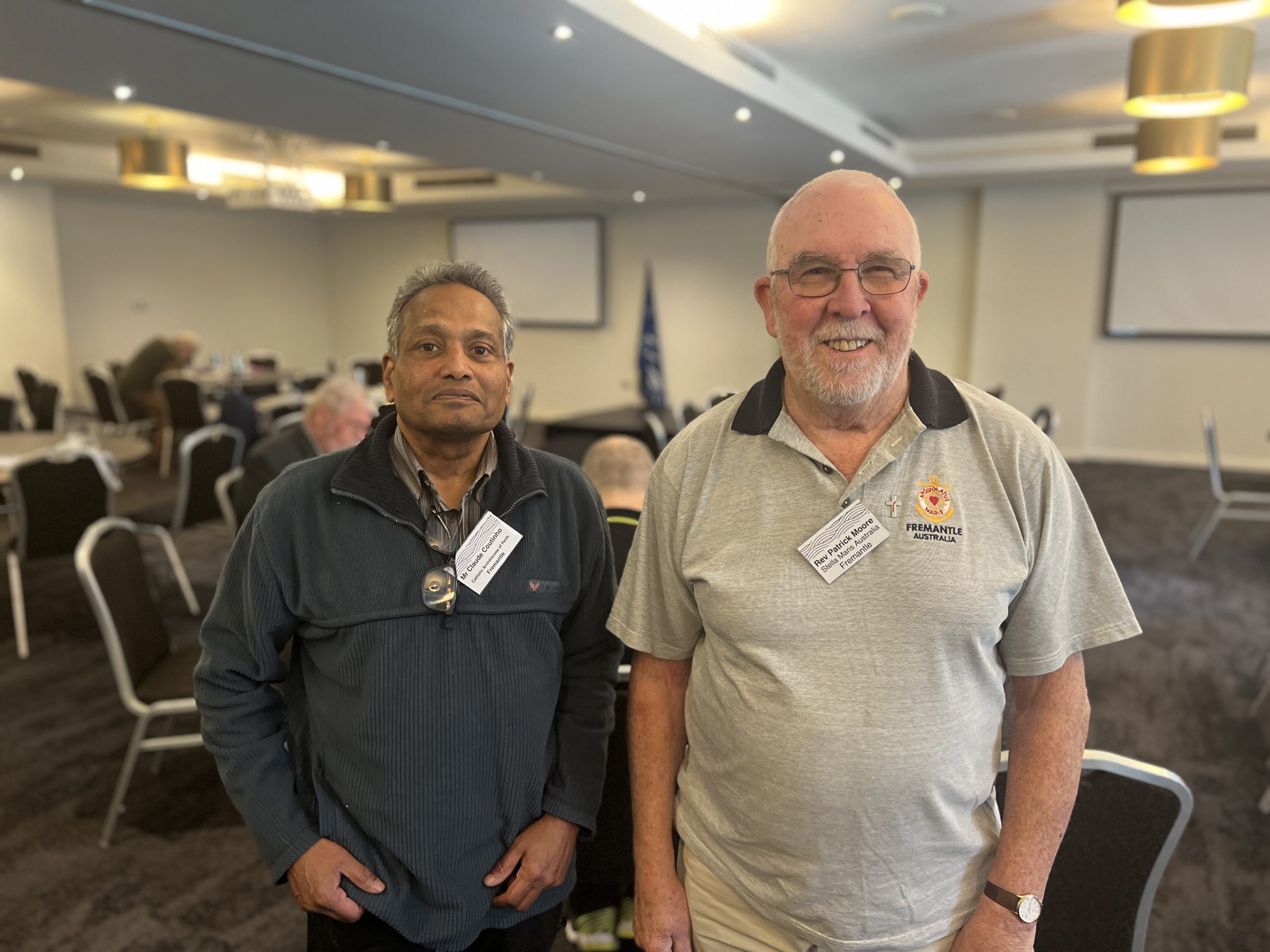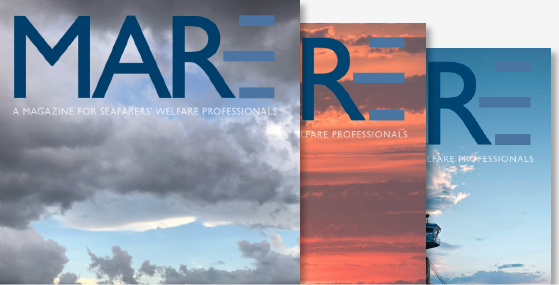by Jason Zuidema – ICMA/NAMMA
Introduction
At the invitation of Dr. Viola Heutger, Rector of the University of Aruba, we came to Aruba for a short series of meetings to better understand the resources that could be available to offer to seafarers visiting the country. The meetings took place from June 25-29, 2022 and included a visit to the Barcadera port facility, meetings with academic, faith and community leaders, and our own research around the island and online. The following report comprises some preliminary findings that might help to prompt more serious study and – we hope – the implementation of concrete measures to improve the welfare of seafarers visiting Aruba.
At this time there are no domestic or foreign NGOs working formally in seafarers’ welfare in Aruba. Though there are already some informal resources, there are gaps in service and more work could be done. We invite any stakeholder in the maritime community in Aruba or serving its ports to dialogue with us to begin work. Our contact information:
Dr. Jason Zuidema
Executive Director, North American Maritime Ministry Association
Context and History
Seafarers are a key part of the ever-expanding global logistics chain and cruise ship tourism sectors. In past generations, the chance to “see the world” was a prime motivation for the recruitment and retention of seafarers. With increased security, faster loading and unloading, political instability, and, especially, a worldwide pandemic, the possibilities of stepping off the ship to see anything have drastically decreased. Ports are often in inhospitable places with few amenities. However, for the security and safety of the ship, and the well-being of crew, shore leave and support of seafarers’ mental health are critical.
Aruba welcomes cruise and cargo ships for multiple port-calls on a weekly basis. Revenue from cruise tourism is a significant part of the economy. The cargo port in Barcadera brings in the vast majority of all goods needed on the island.
Though seafarers sleep and eat on board their vessels, they do have some needs that are unmet. A key need is refreshment and relaxation away from their place of work. By nature of being at sea, seafarers regularly live in a setting of social isolation, with contracts that mean they are away from family and friends for 6 to 9 months. Being away at sea also increases risks of negative mental health, with higher risks of depression and substance abuse. Many seafarers report experiencing bullying and sexual harassment. It is common around the world to have non-payment of wages or abandonment of vessels.
The key for seafarers’ welfare on board are their fellow crew members, their employers, crew managers and the shipping companies. Many seafarers are protected by unions that make up the International Transport Workers’ Federation. Countries, port authorities and managers also have a role to play.
Among the network of those who can support are NGOs that provide port-based seafarers’ welfare services. Operating in more than 700 ports globally, these are typically faith-based organizations, but often involve creative partnerships between faith-based and other secular organizations. These organizations are often known interchangeably as seamen’s churches, seafarers’ centres, missions to seafarers, seamen’s clubs, stella maris or might bear the name of the port or sponsor. Most are members of international associations like the International Christian Maritime association (icma.as) or its North American/Caribbean network, the North American Maritime Ministry Association (namma.org). These networks exist to promote seafarers’ welfare in ports around the world.
A local seafarers’ mission can offer different services, but they can vary significantly in size and resources. Typically a mission might have a drop-in centre to relax and use free WiFi, might provide free transportation from ship to the local supermarket, might offer gifts or toiletries (bottled water, sweets, Christmas gifts or similar), but especially has a staff of volunteers and chaplains that can interact with crew to provide encouragement, local knowledge, friendly advice and a listening ear. If crew have religious or other personal needs, seafarers’ missions can help facilitate an appropriate response.
This type of seafarers’ mission is not unknown to Aruba. When the oil refinery was in full swing in San Nicolas, there were multiple organizations that ran centres including the Catholic Apostolatus Maris (now Stella Maris) that ran the International Seamen’s Center, the Norwegian Seamen’s Church, and also the United Seamen’s Service which ran the American Seamen’s Club. These all closed in the early 1980s as the refinery also closed. More information on these centers is in appendix 1.
Though resources do exist on the island to answer a significant number of seafarers’ welfare issues, there are no doubt gaps in service, especially considering the sheer number of seafarers who arrive on a weekly basis. Through our brief study, a few questions for further study remain:
- a review of free WiFi available for cruise ship crew in Oranjestad
- a review of transportation options to shopping or other destinations for crew arriving in ISPS zone at Barcadera
- a review of humanitarian and human rights issues among crew arriving in non-ISPS zone at Barcadera
- a review of services available for crew at oil terminal in San Nicolas
- a review of retired or inactive seafarers and port workers on the island
Current Port Facilities
| Port of Oranjestad /Paardenbaai | Barcadera | San Nicolas | |
| Description | Cruise terminal operated by the Aruba Ports Authority, N.V. | Multi Cargo Sea Terminal operated by Aruba Stevedoring company, N.V. (ASTEC) | Oil terminal operated by (?Valero Aruba N.V.) |
| History | Shipping in this area since Fort Zoutman in 1796. From 1928 to 1958 an oil refinery of Shell subsidiary. In 1974, the pier and the refinery were demolished and replaced by a tourist resort with a large beach. Until 2016 cruise, cargo, freezone and pleasurecraft all in this area waterfront. In 2016, cargo operations (both ISPS and non-ISPS) transferred to new Barcadera port. | In 2013 Aruba Ports Authority N.V. announced that they were ready to begin Aruba’s US $62 million dollar project to Design, Build, Finance, Maintain, Operate, and Transfer the Multi-Cargo Sea Terminal at Barcadera. The contract was awarded to the local stevedoring company Aruba Stevedoring Company (ASTEC) NV. The project was implemented as a Public Private Partnership (PPP) under the Landlord Model. The concessionaire will be responsible for the investments in terminal infrastructure, labor, and operational activities. Opened in 2016. Handles 94% of cargo coming in and out of Aruba. | Lago Oil refinery in San Nicolaas opened 1924. At its height, 10,000 personnel. Closed by Exxon in 1985. Reopened at reduced size by Coastal Corporation and sold to Valero. In 2017, sold to Citgo which transferred the property to the Government of Aruba in 2020. The Aruban government has wholly owned Refineria di Aruba NV. |
| Movement | https://www.arubaports.com/tracker/ 3-10 vessels per week (the COVID-19 pandemic has significantly affected cruise schedule) | https://www.arubaports.com/tracker/ On average 5 vessels per week. | Fuel still imported and stored in tanks on premises, 1 ship per week on average. |
| Description | Passenger information https://www.arubaports.com/main/statistics/ | ISPS section – containers, building products, cement, liquid bulk. Built for continued expansion. | |
| Non-ISPS section – small boats with fruit and other products from South America. Volume of boats lower with restrictions from Venezuela – perhaps now 5 boats per day. Previous to restrictions 15-20 boats per day and 100-200 seafarers on the terminal (even more in certain extraordinary circumstances). Should restrictions with Venezuela be lifted, traffic to again increase. Shower and washroom facilities available for crews. Free WiFi available. | |||
| Website | arubaports.com | astecaruba.com |
Current Resources
- During the depths of pandemic when many other countries were closed to foreigners, Aruba served as a crew change hub
- Free WiFi provided for crew in Barcadera port, both in ISPS and non-ISPS sections – WiFi password communicated from terminal via ship’s agent to crew.
- Shower and washroom facilities provided for crews in Barcaderca port non-ISPS zone
- WiFi available at a number of places in central Oranjestad for cruise ship crew – unclear how many places are free or whether a small purchase is required (ex. Starbucks in the Renaissance Hotel shopping centre would seem to require purchase of beverage to use seating.)
- Restaurant-bar for Filipino crew in Oranjestad – similar functions to a seafarers’ centre, especially provided WiFi.
- Tourism infrastructure also used also by cruise ship crew (day-trips to beach or similar alongside other tourists).
Potential Resources and Future Possibilities
- Directie Scheepvaart (DSA) will introduce the National Maritime Strategy in the 2023 national Budget.
- Stichting Rancho connections with volunteers and Rancho community that was formerly connected to the port, especially those importing/selling fruit and other small products from South America.
- “Port City Oranjestad project” Aruba Ports Authority (APA) will transform the former cargo terminal area near the cruise terminal Oranjestad into a new and reformed leisure, residential and working area. This area is to act as a magnet for residents and tourists alike, with a Waterfront Park and phased development of mixed use commercial real estate. https://www.arubaports.com/main/port-city-oranjestad/ This plan ought to consider what impacts the project will have on cruise ship crew and what possibilities might help cruise ship crew.
- Work with faith communities/churches in Aruba to consider volunteer or other resources that could be used to support seafarers.
- Work with University of Aruba to consider research projects that promote seafarers’ welfare in Aruba’s ports.
- Worldwide network of seafarers’ welfare organizations previously involved in Aruba might again be interested in participating.
- Dialogue with current bars and restaurants that cater to crew members to gain insight into potential improvements (example: Kambal Pinoy Kusina Bar and Restuarant, Havenstraat 26, Oranjestad)
- Dialogue with current taxi or transportation services, especially those serving crew in Barcadera port
Recommendations
- Consider signature and implementation of Maritime Labour Convention, 2006 by national government
- Add seafarers’ welfare for consideration by Department of Transport and Department of Tourism
- Convene seafarers’ welfare committee with stakeholders of sector (this is recommended in section 4.4 of MLC, 2006)
- Complete more detailed review of resources and needs of visiting seafarers, including survey of crew members visiting on cruise and cargo ships
- Review needs of seafarers arriving in non-ISPS zone in Barcadera port, especially if political relationship with Venezuela is regularized
- Review mental health, wellness or other needs of cruise ship crew
- Gather information on whether any seafarers in hospital, prisons, or have any other interactions with government or social agencies on the island
- Invite international seafarers’ welfare NGOs to consider supporting work on the island
Appendix 1: Seafarers’ Welfare Centers in San Nicolas
Appendix 2: Resources/For Further study
https://www.stichtingrancho.org/
https://dfa.gov.ph/dfa-news/dfa-releasesupdate/28707-586-filipino-seafarers-flown-home-from-aruba
https://www.ilo.org/global/standards/maritime-labour-convention/lang–en/index.htm
https://tradingeconomics.com/aruba/imports/venezuela
Irene Broekhuijse, Ernst Hirsch Ballin, and Sofia Ranchordás, “The Constitutions of the Dutch Caribbean: A Study of the Countries of Aruba, Curaçao and Sint Maarten and the Public Entities of Bonaire, Sint Eustatius and Saba,” https://pure.rug.nl/ws/portalfiles/portal/195068520/law_9780198793045_chapter_9.pdf
Presentation of Jason Zuidema at Protestantse Kerk Oranjestad, 26 June 2022. https://youtu.be/SMgd4qZU8eI&t=57m46s
About the Author – Jason Zuidema (PhD, McGill University) serves as Executive Director of the North American Maritime Ministry Association (NAMMA) and General Secretary of the International Christian Maritime Association (ICMA). NAMMA’s network counts more than 55 affiliated seafarers’ centres in ports around North America. These associations bring together local and regional organizations that provide services to seafarers including transportation, free WiFi, a drop-in centre, and friendly conversation. In his work for NAMMA and ICMA, Zuidema is the publisher of The MARE Report online and in print, producer of the Ship Welfare Visitor Course online, and director of MARE Training.





